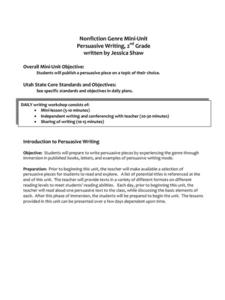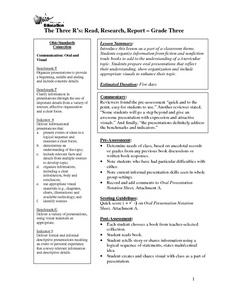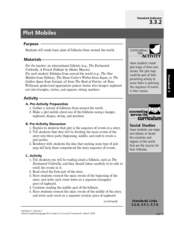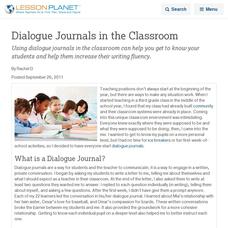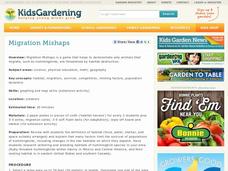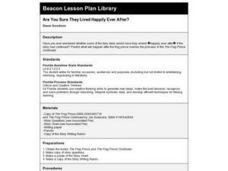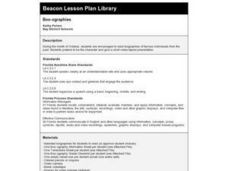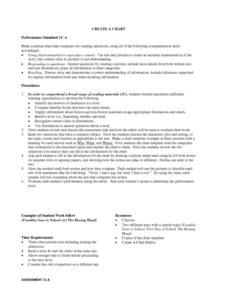Curated OER
Nonfiction Genre Mini-Unit: Persuasive Writing
Should primary graders have their own computers? Should animals be kept in captivity? Young writers learn how to develop and support a claim in this short unit on persuasive writing.
Calloway County Schools
Dialogue Rules, Worksheet, and Writing Assignment
Punctuating dialogue properly can be tricky, but your pupils can become punctuation masters with practice. This resource includes an explanatory page that describes the rules of writing dialogue and provides examples. On the second page,...
Curated OER
Narrative Literature Response Letters: Original Lesson Plan
Readers write a formal letter to an author offering an alternative ending to a story the author has written. First, the class reads a story or novel. Upon finishing the reading, they are introduced to the format of a formal letter. They...
Curated OER
Read Research and Report
Third graders organize information from fiction and nonfiction trade books to add to the understanding of a /curricular topic. They prepare oral presentations that reflect their understanding, show organization and include appropriate...
Curated OER
Novel Study Night of the Twisters
In this reading worksheet, students use this graphic organizer to map the beginning, middle and end of The Night of the Twisters. Students use this "plot pie" to write a few sentences to summarize the story. The graphic organizer is...
Curated OER
Plot Mobiles
Students read folktales and identify the plot of the story by making a mobile. For this inventive and colorful lesson, students listen to a variety of famous folktales, and practice identifying the plot. Then, they work together to...
Curated OER
Alexander and the Terrible, Horrible, No Good, Very Bad Day
Learners investigate storytelling by analyzing images in a book. In this reading analysis lesson, students read and analyze the book Alexander and the Horrible, No Good, Very Bad Day. Learners observe the illustrations in the...
Curated OER
Jalapeno Bagels
Students read the story Jalapeno Bagels and then write a summary about it. For this summary lesson plan, students retell the story as if someone else has not read the story.
Curated OER
Writing Lesson Plan: Stop and Go: Capitals and Periods
Examine writing using a fun, interactive format. Young writers choose a piece of their own writing to proofread for initial capitals and final periods they left out. They work independently using green stickers to add capitals and red...
Curated OER
Think First, Then Ask
Students are to read the book Everglades and create a KWL chart about the book. The KWL chart is explained to the students during the process of them reading the book. They complete step-by-step instructions to read the book and complete...
Curated OER
School-Home Links: Writing a Story
In this story writing worksheet, students write a story about a birthday party they went to and incorporate a clear beginning, middle, and end. Students must read the story aloud to family. Parents or guardians must sign the worksheet.
Curated OER
Lessons from the Holocaust
Students prepare a reaction statement about what they read. In this Holocaust lesson students read several personal accounts from the Holocaust. The students answer a series of questions related to the Nazis and their concentration camps.
Curated OER
Dialogue Journals in the Classroom
Using dialogue journals in the classroom can help you get to know your students and help them increase their writing fluency.
Curated OER
David's Day
Young scholars read David's story, paragraph by paragraph, in order. At the end of each paragraph, have students identify the bullying behavior. They draw where David is on the scale so young scholars can see David getting more unhappy...
National Gardening Association
Migration Mishaps
Elementary ecologists pretend to be migratory hummingbirds. They fly between wintering and nesting grounds, trying to reach a habitat haven. In a musical-chair fashion, some birds will miss out, and are removed from the game. To further...
Curated OER
Are You Sure They Lived Happily Ever After?
Students listen to a read aloud of Jon Scieszka's, The Frog Prince. They predict what happens after the frog prince marries his princess.
Curated OER
Igga Bigga
Students explore consonant digraphs in written words and use them in their own sentences. They work with /th/, /sh/, and /ch/ digraphs. Students read The Little Old Lady Who Was Not Afraid of Anything and identify words with the...
Curated OER
The Gingerbread Story
Students explore storytelling by reading a classic book. In this story structure lesson plan, students read the story The Gingerbread Man and identify the characters, settings and plot. Students answer reading comprehension questions...
Curated OER
Understanding and Writing Fables
Third graders review with the teacher the characteristics for a fable and what it is. They read one paragraph each from the story, "The Fox and the Stork" aloud. They then answer comprehension questions aloud. Next, they listen to four...
Curated OER
Boo-ographies
Pupils read biographies of famous people and create a presentation where they become the characters they have read and researched. They create tombstones for the people they have researched.
Curated OER
Create a Chart
Students create charts for story elements. They read two selections that share a common theme and discuss the story elements. They create a chart for the characters, plot, and setting and complete it while reading the selections.
Curated OER
Writing
Pupils work together in groups to brainstorm ideas on writing topics. After being read stories, they watch a demonstration of webbing and how to connect related ideas. They write their story and are graded based on a rubric.
Curated OER
Round Robin Suspense
Pupils, in groups, write suspense stories. At the end of a timed period, they pass the story to the next student to continue it. At the last writing session, the papers are returned to the originators and they share the stories with the...
Curated OER
School-Home Links: Root Words and Suffixes
In this spelling new words worksheet, students learn to figure out the meaning of a new word by learning the root word and suffix. Students put the root words and suffixes together to make new words and write those words on the line....
